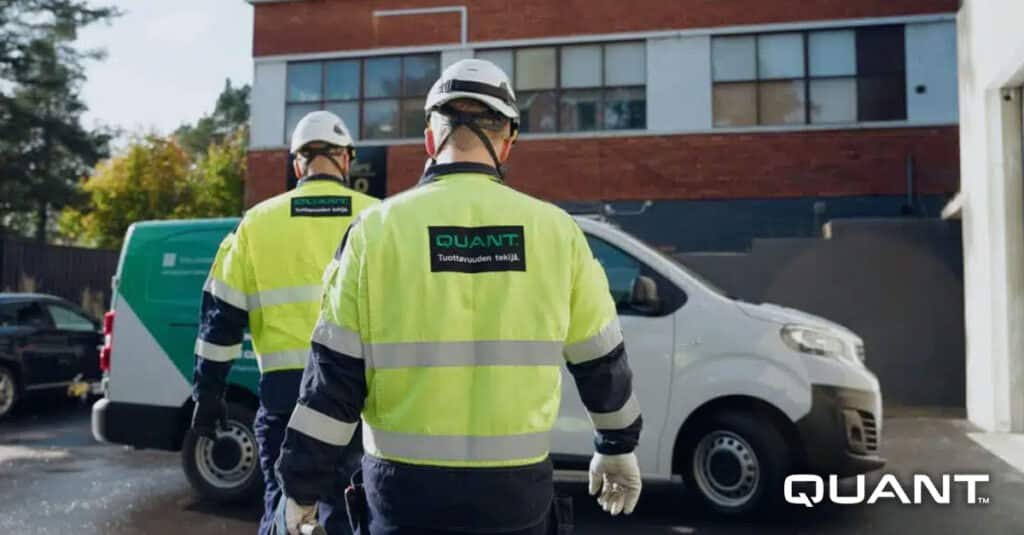April 23, 2025
Safety is not done on paper – and its effects extend all the way to the customer’s production

Safety is not just about instructions or regulations – but about everyday actions, cooperation, and having the right attitude. Recently, Marko Salokannel joined Quant Finland as Electrical Work Safety Manager, bringing solid educational and work experience combined with a vision for how safety should work in practice.
In Finland, the current update of the electrical work safety standard also creates new expectations in customer environments – and at Quant, we want to be one step ahead. Marko’s task, together with the safety team, is to ensure that we develop operating methods that support a safer and smoother everyday life – for us and our customers.
Safety is not just about the workplace – it is a mindset
Marko Salokannel joined Quant Finland in April. He brings with him more than two decades of experience in electrical work, from being an installer to supervisor, also having held roles such as electrical work manager and training manager. The industrial field, teaching, and safety-related work are familiar to him – as is the customer’s perspective.
– I have always been interested in safety but especially in understanding regulations so that you know how to apply them correctly – not just carry them out. When you know why a certain guideline exists, you follow it with a completely different attitude, he says.
From Marko’s perspective, safety is not just a matter for the workplace. It is a part of a mindset. Every decision – in a work situation or in your private life – could benefit from stopping for a moment, thinking, and evaluating.
The standard is changing – and so is the practice
The electrical work safety standard in Finland is being updated, and the reform brings new requirements for risk assessments, protective equipment, and de-energization. At the same time, this is an opportunity to develop Quant’s own procedures to make them even clearer and more efficient.
– It is great to see that a lot is already in order here at Quant. Now, the aim is to create more clarity and certainty in how things are done at different sites, while ensuring that we can meet customers’ safety expectations, Marko says.
He also emphasizes that this development is not just about meeting requirements, but about how everyday work supports the continuity of the customer’s processes. When risks are identified in time, instructions are clear, and operating methods are consistent, there is peace of mind and fewer disruptions.
One of Marko’s most important principles can be summarized with three words: think, check, verify. It does not just apply to electrical work, but it is again about an attitude that fits into any environment where safety matters.
– Never assume that something is de-energized or safe. Often the greatest dangers arise from haste, habit or too much certainty. That is exactly why we need the courage to stop.
Safety culture is born from cooperation, not supervision
According to Marko, the core of a strong safety culture is not in rules or checklists, but in how people relate to each other and their environment.
– When something goes wrong, we should not look for the culprits, but for the causes – and solutions. Openness is important. We need to be able to handle near misses without fear, because every observation can prevent a bigger mistake.
Safety is not just the responsibility of the safety manager or supervisors. Everyone can – and should – intervene constructively and in a good way if needed. And it is precisely this collaborative thinking that is also valuable to the customer; a well-functioning culture is reflected in the quality, efficiency, and predictability of work.
Marko’s goal is to visit as many sites in the area as possible, to get to know colleagues, and hear how everyday life works in different places. He emphasises that safety work cannot be done remotely – it must be built together, in the field, in the everyday life.
– Let us take care of each other. One good observation can save the day – or even a life. Safety is not an obstacle to work. That is a prerequisite for it.

